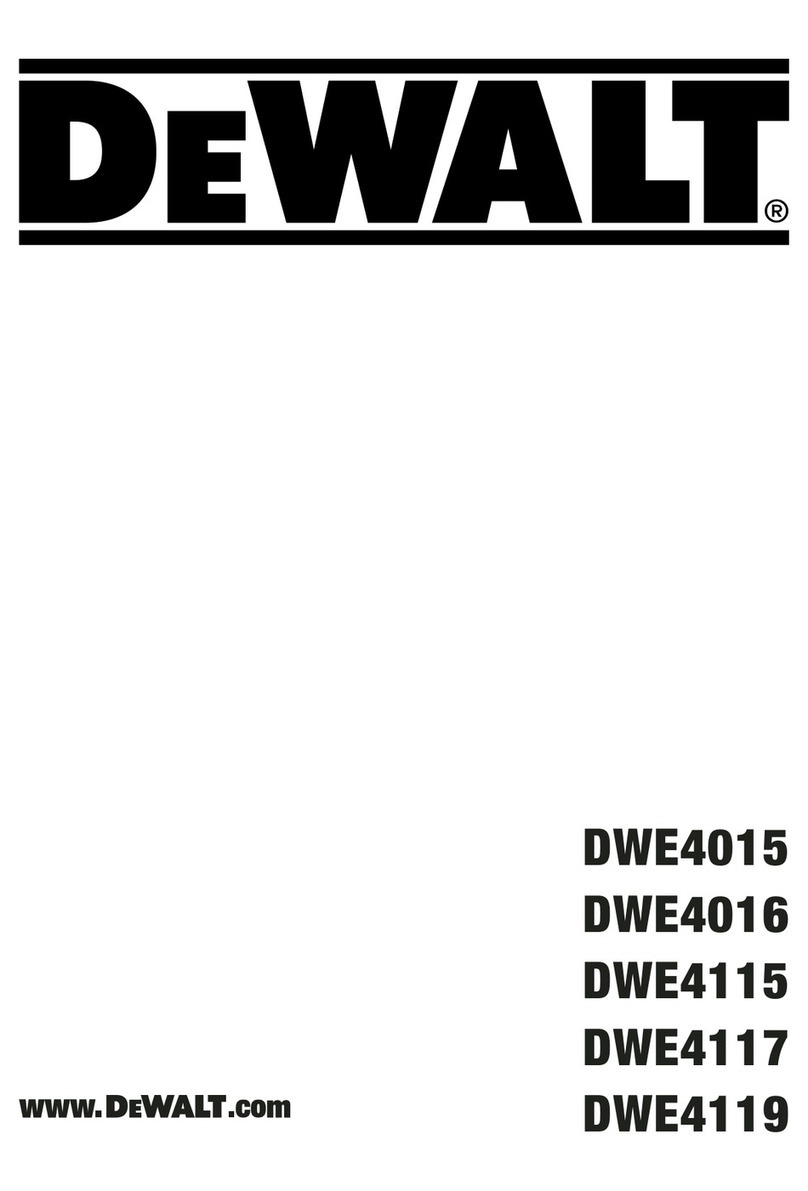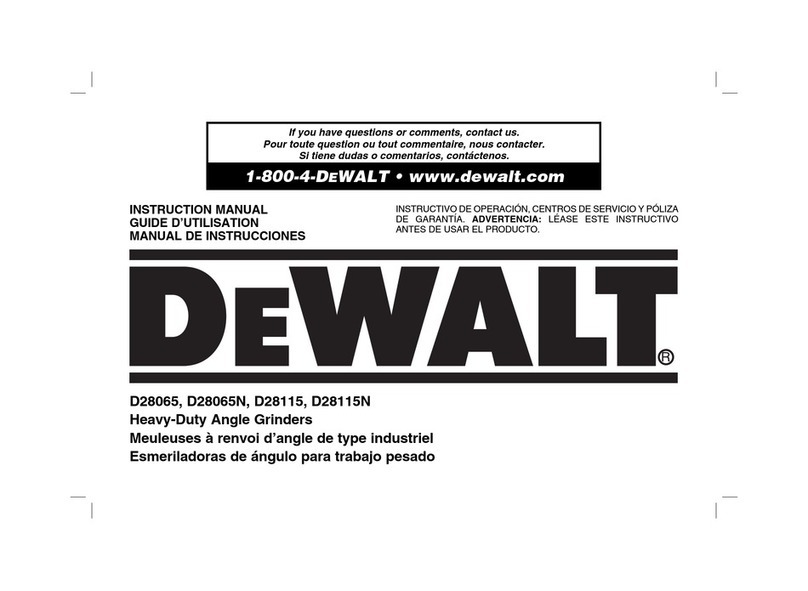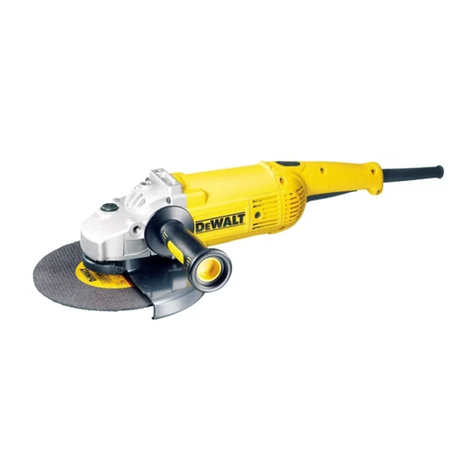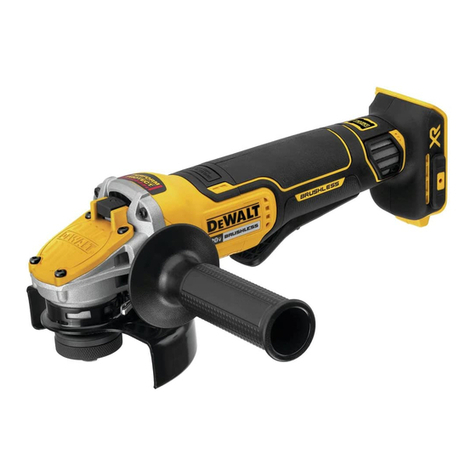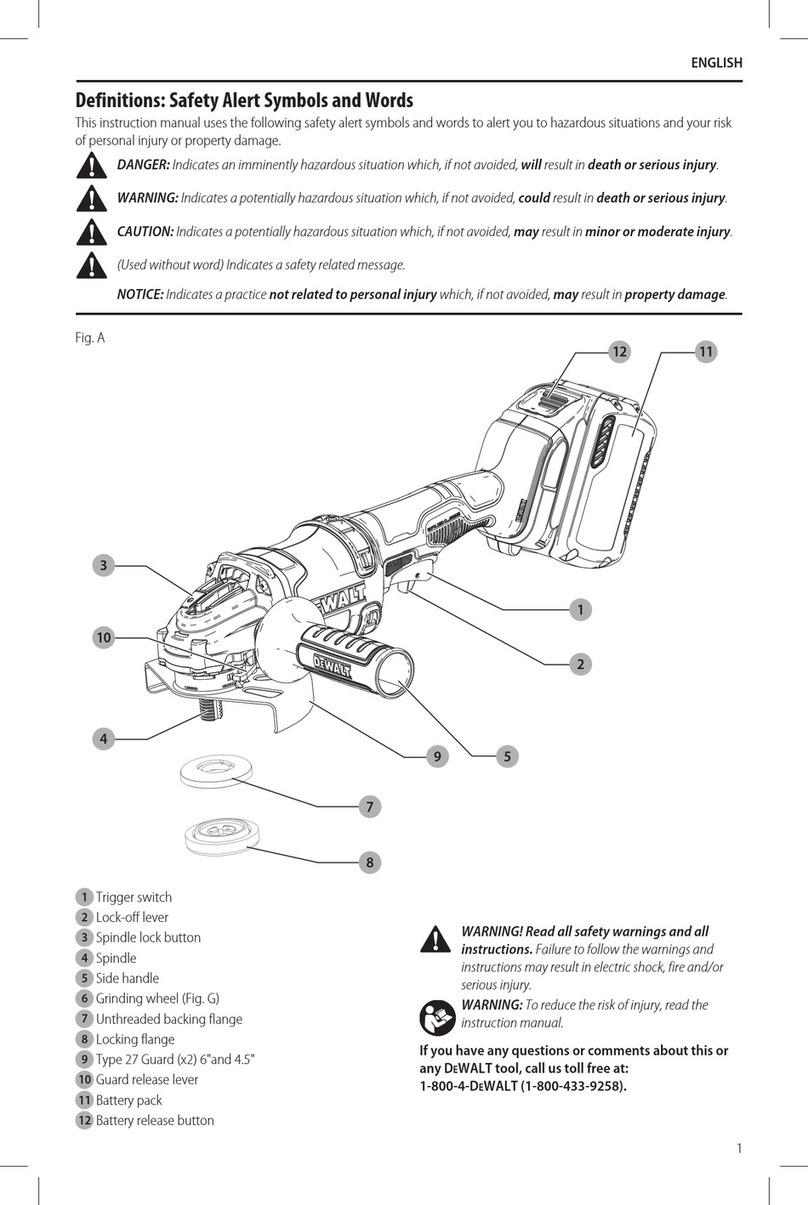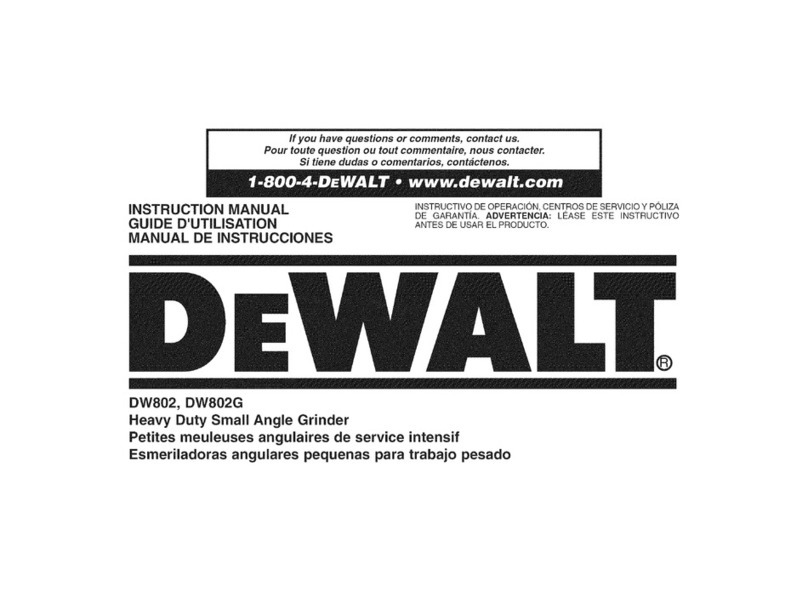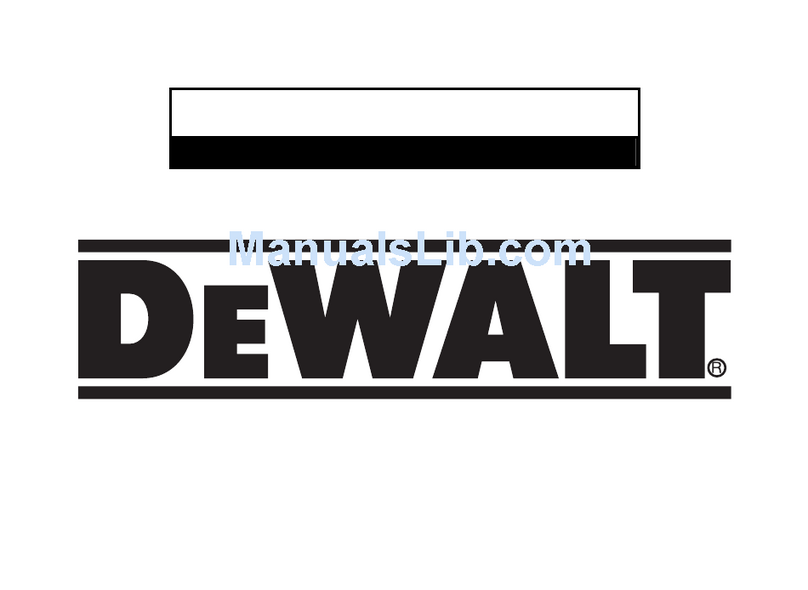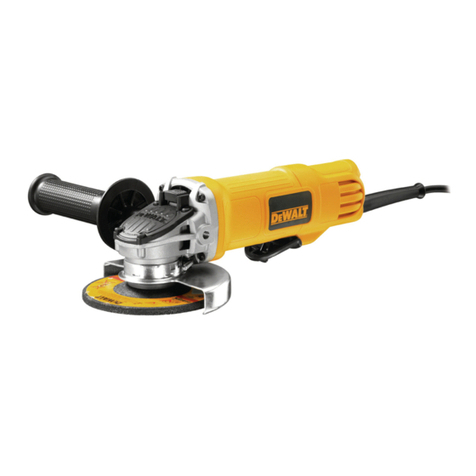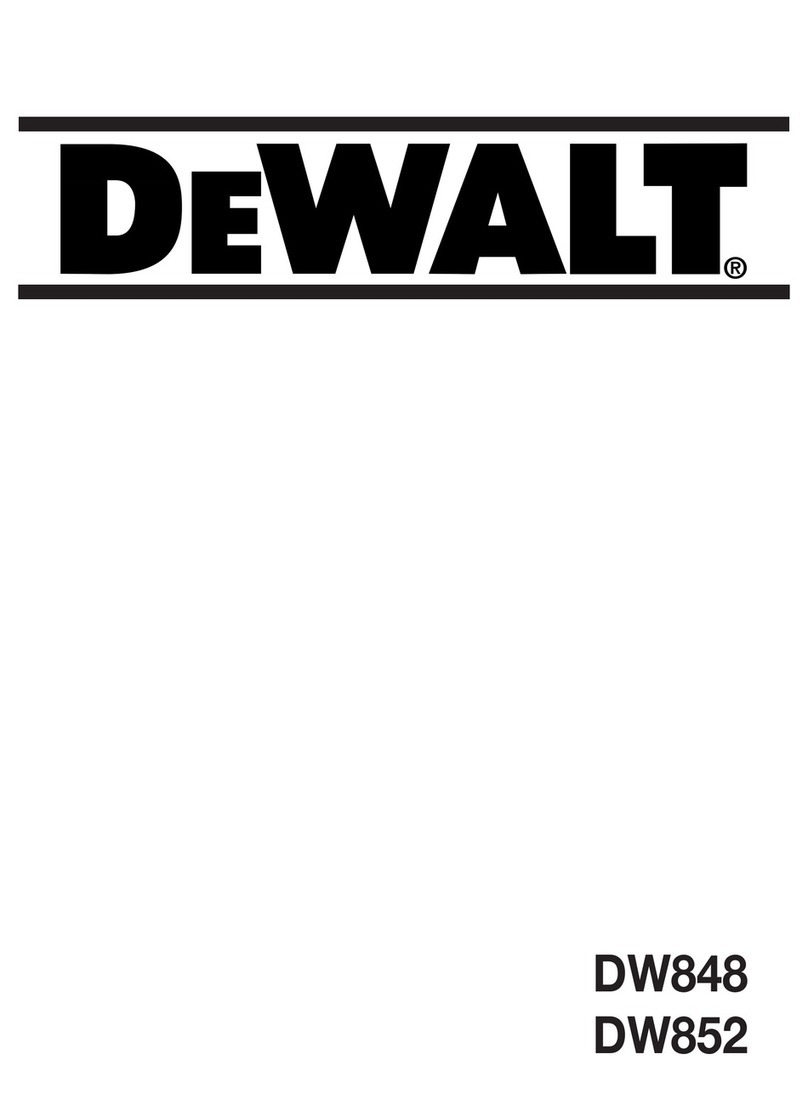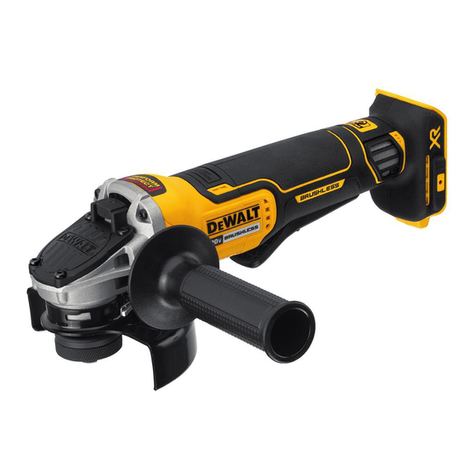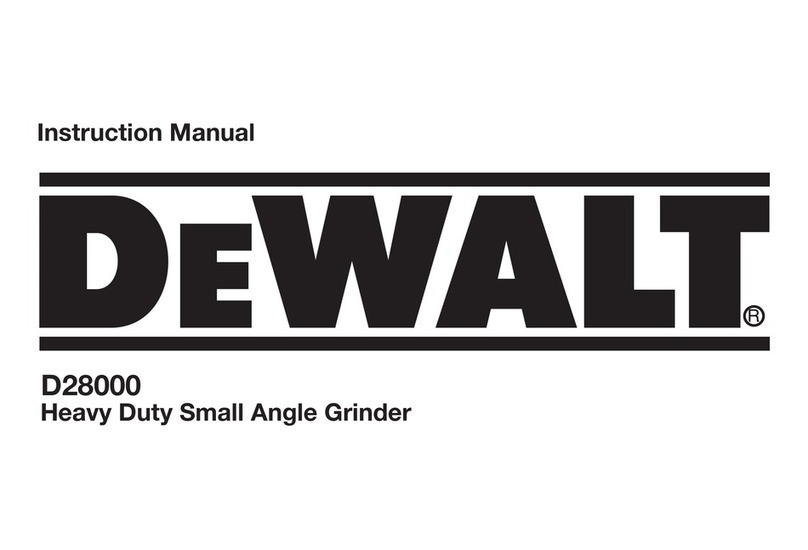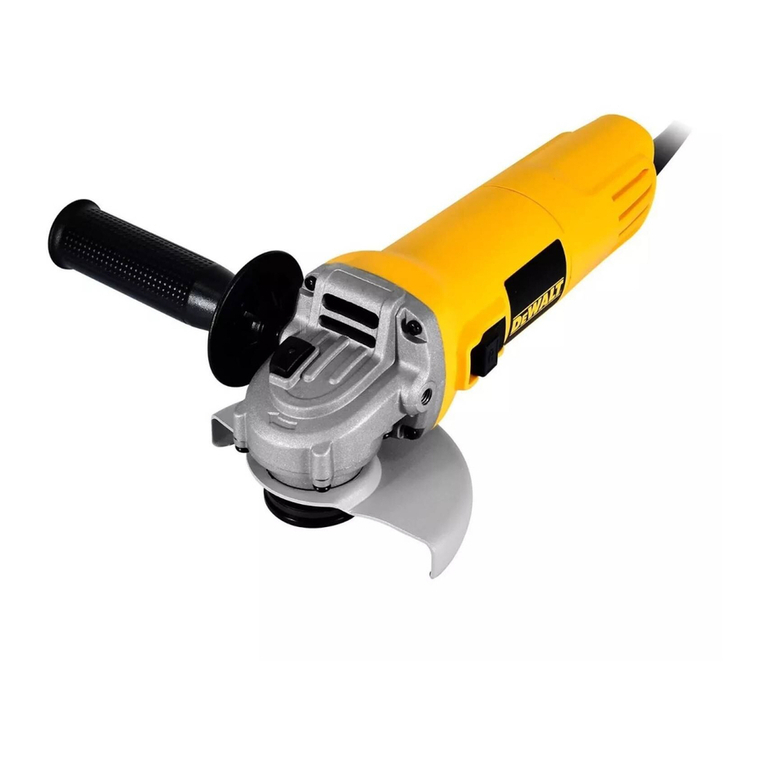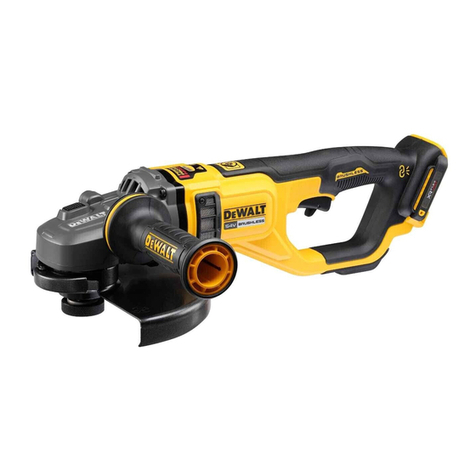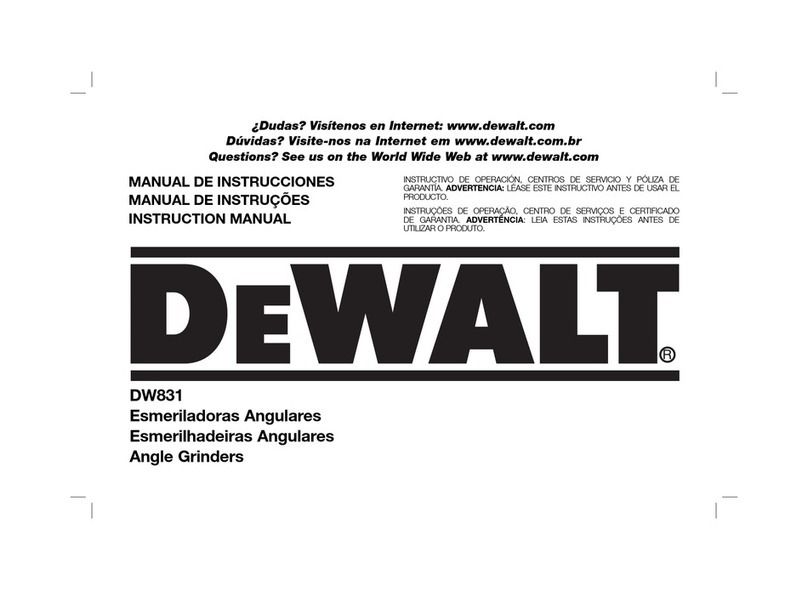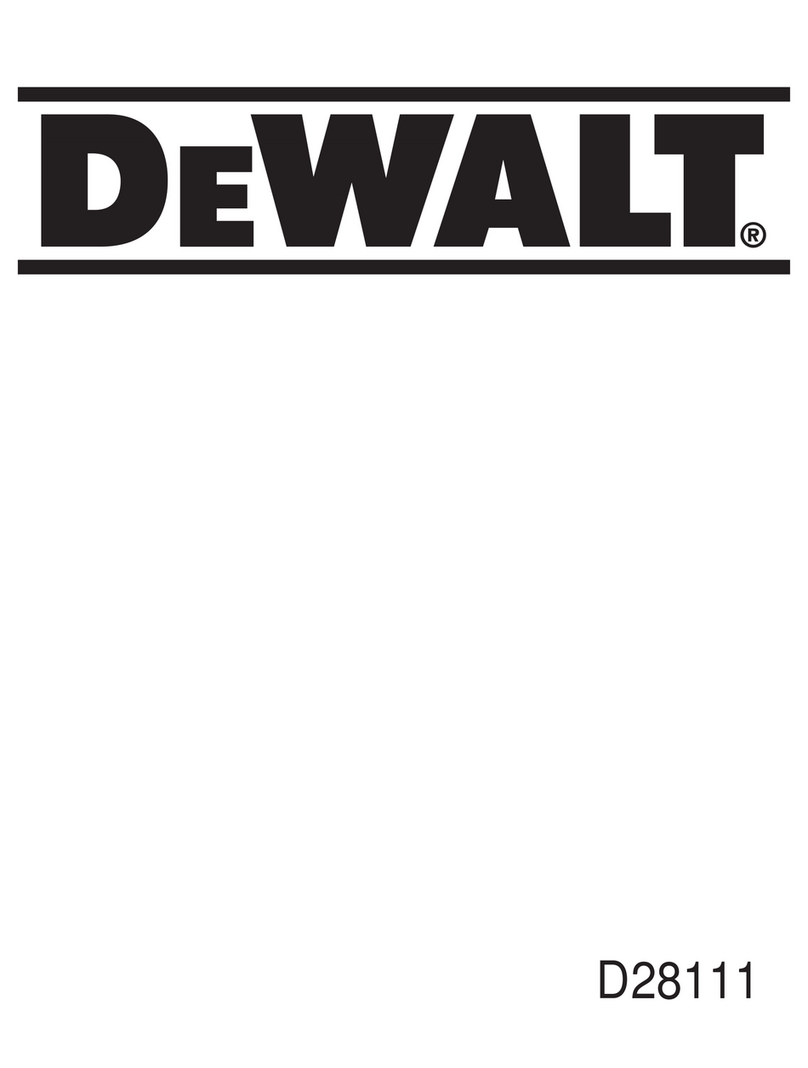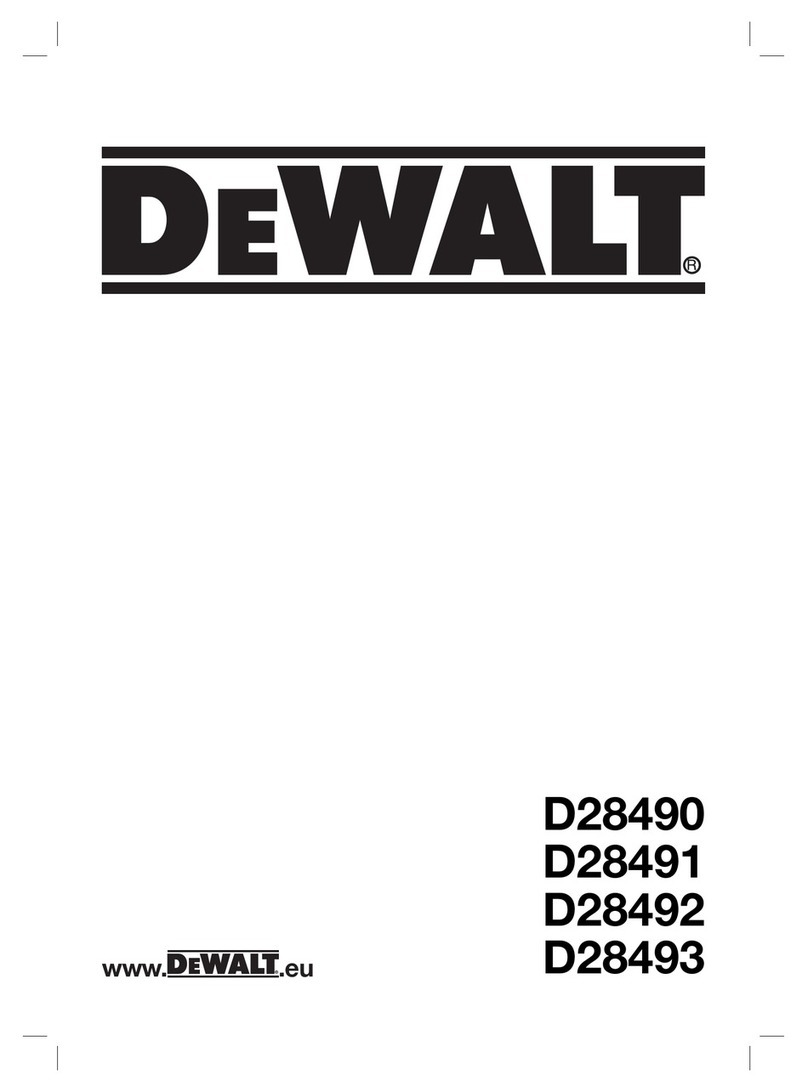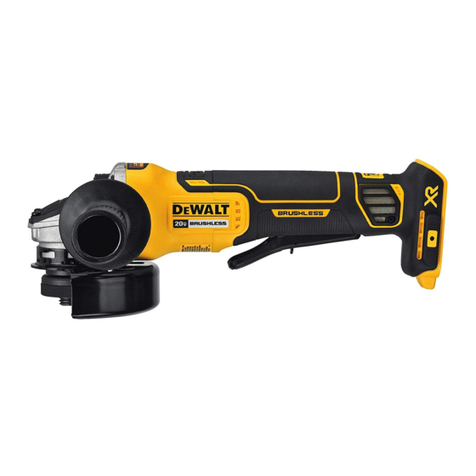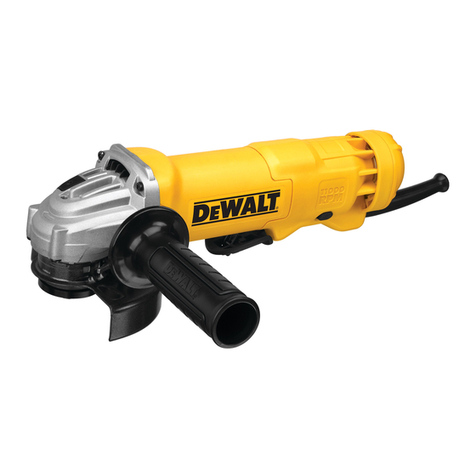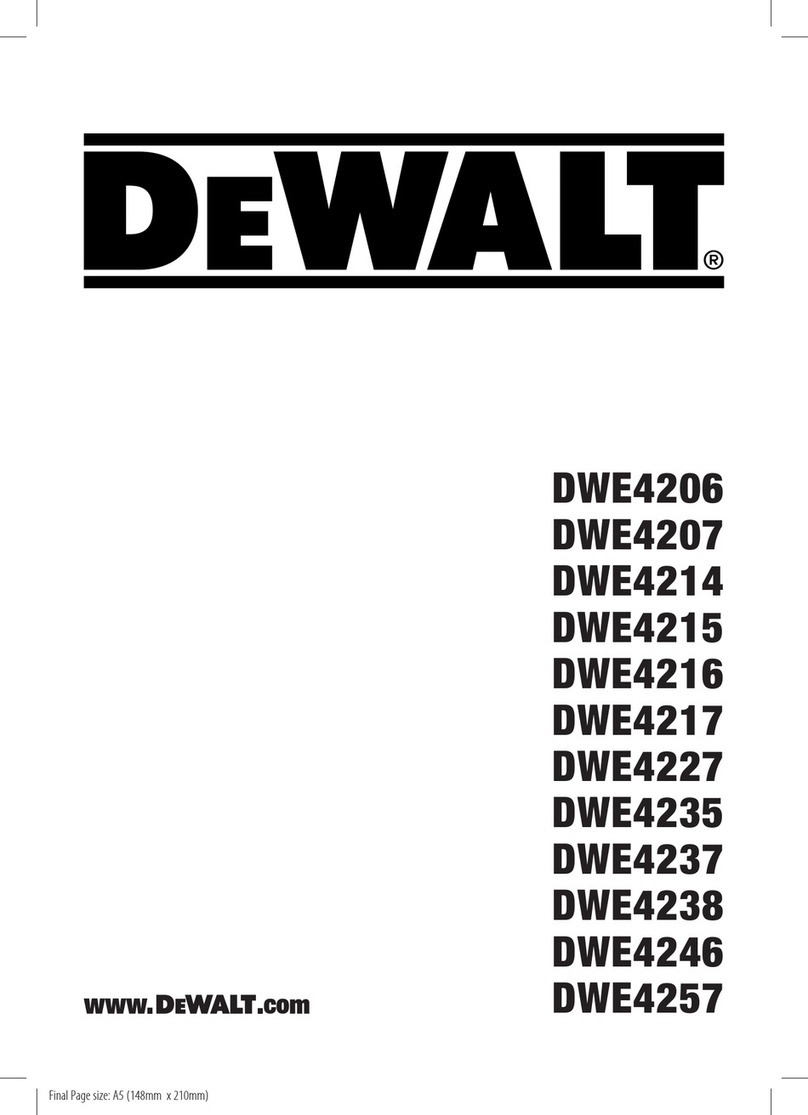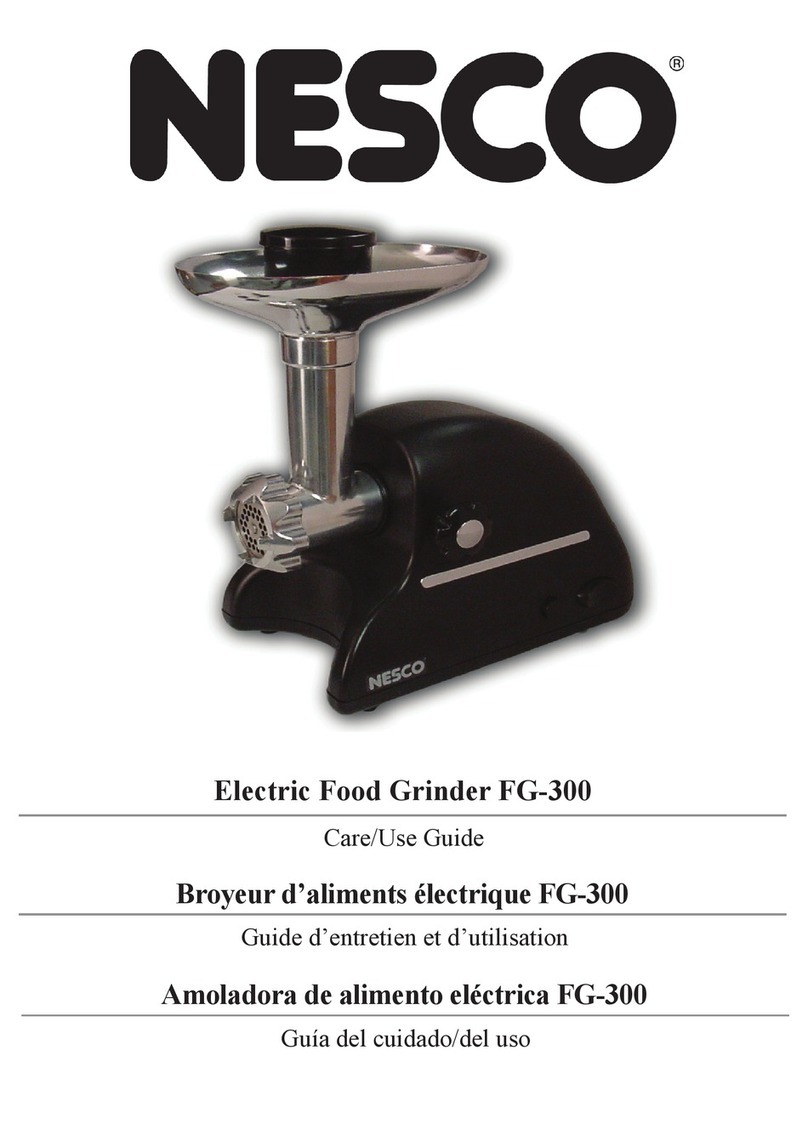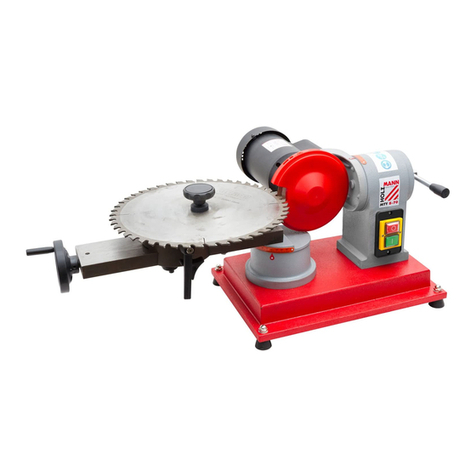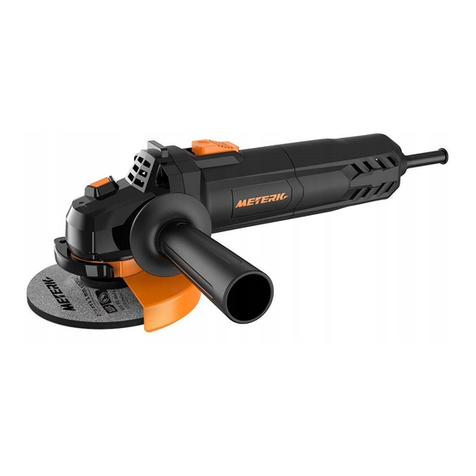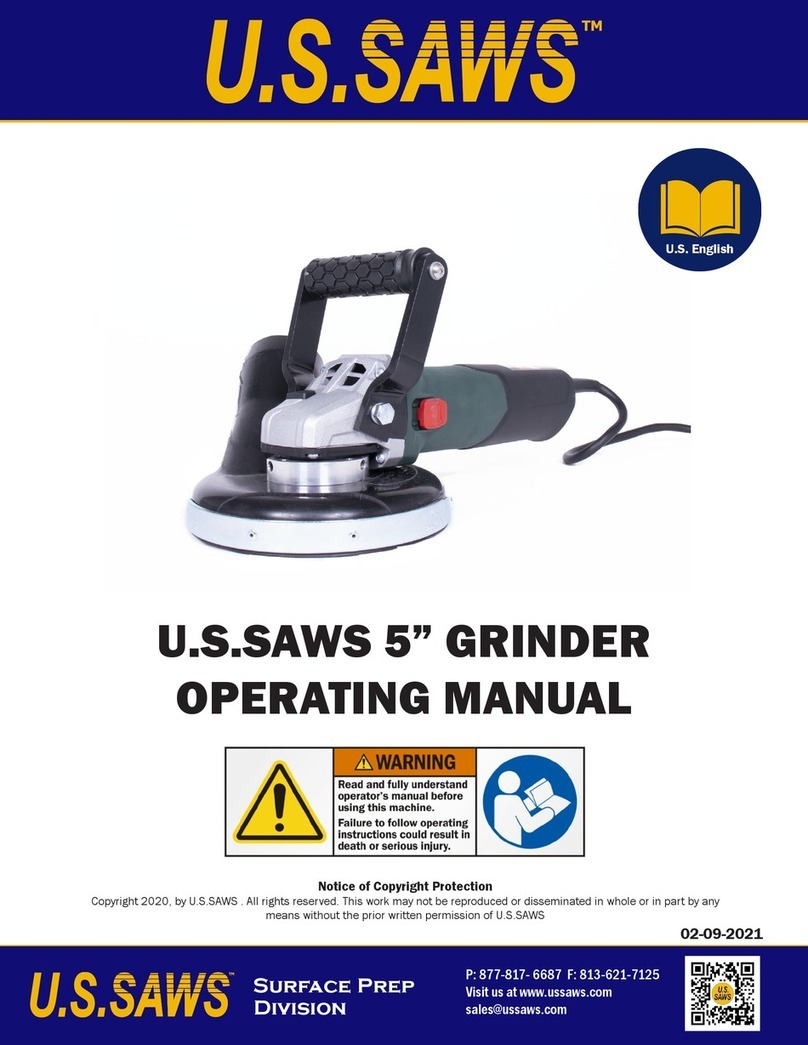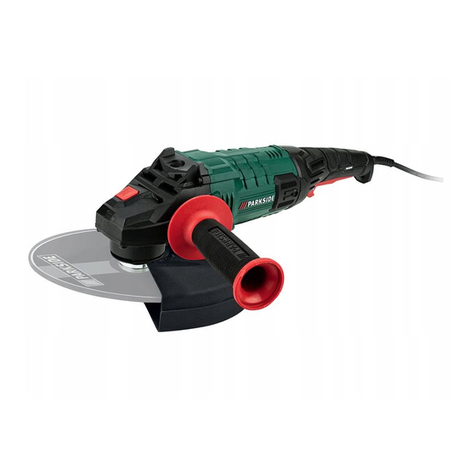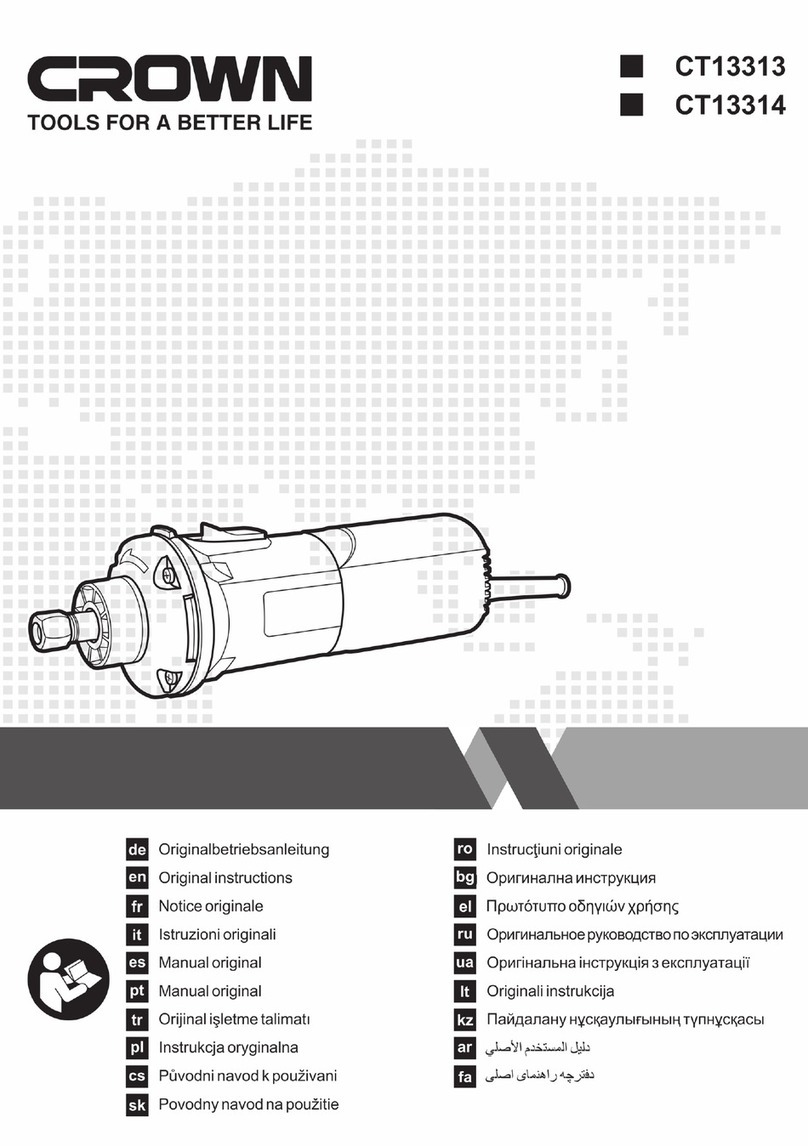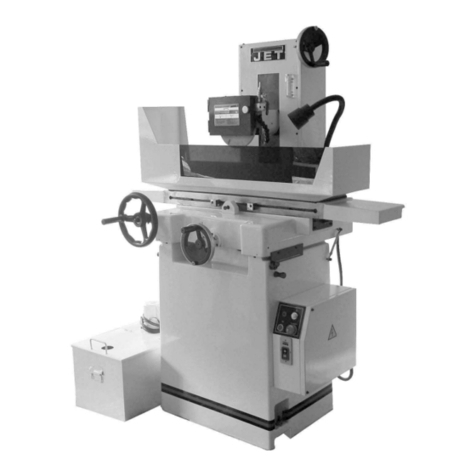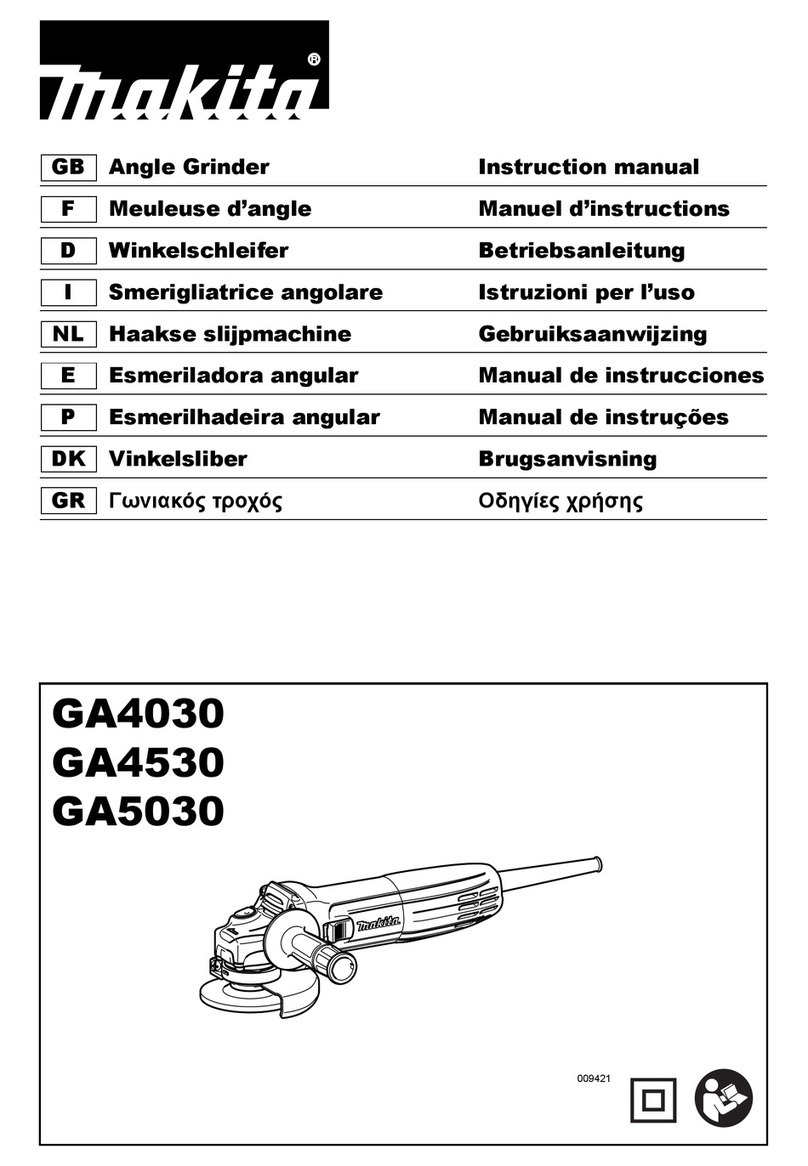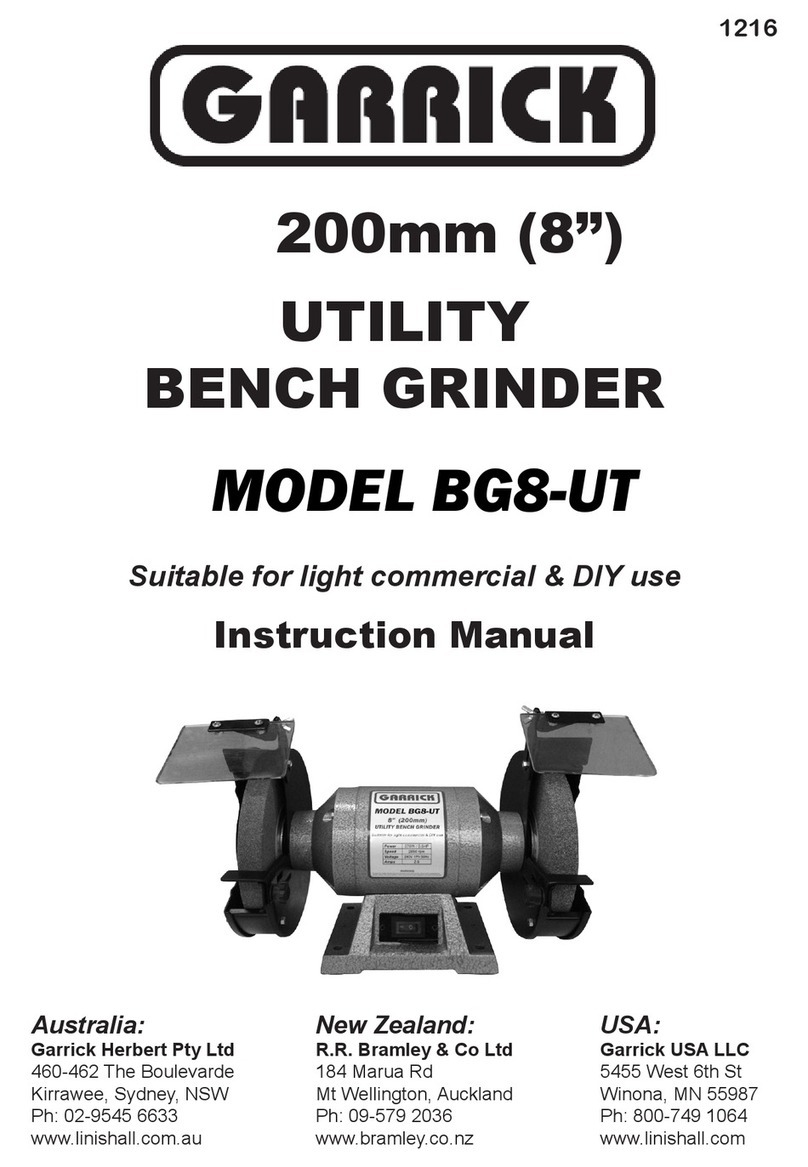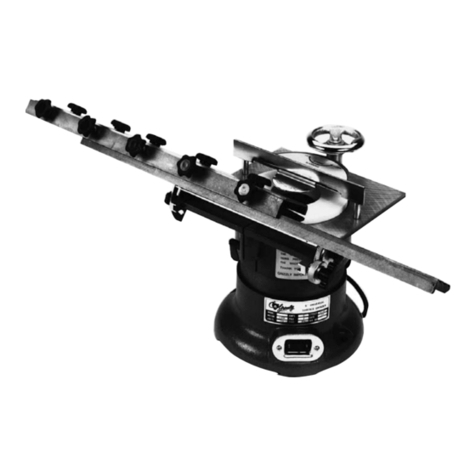3
English
• Accessories must be rated for at least the speed recommended
on the tool warning label. Wheels and other accessories running
over rated speed can fly apart and cause injury. Accessory ratings
must be above listed minimum wheel speed as shown on tool
nameplate.
• Hold tool by insulated gripping surfaces when performing an
operation where the cutting tool may contact hidden wiring or its
own cord. Contact with a “live” wire will make exposed metal parts of
the tool “live” and shock the operator.
• Do not use Type 11 (flaring cup) wheels on this tool. Using
inappropriate accessories can result in injury.
• ALWAYS WEAR EYE PROTECTION WHEN USING THIS TOOL.
• Use of accessories not specified in this manual is not
recommended and may be hazardous. Use of power boosters
that would cause the tool to be driven at speeds greater than its rated
speed constitutes misuse.
• Do not use circular saw blades or any other toothed blades with
this tool. Serious injury may result.
• When starting the tool with a new or replacement wheel, or a
new or replacement wire brush installed, hold the tool in a well
protected area and let it run for one minute. If the wheel has an
undetected crack or flaw, it should burst in less than one minute. If the
wire brush has loose wires, they will be detected. Never start the tool
with a person in line with the wheel. This includes the operator.
• Avoid bouncing the wheel or giving it rough treatment. If this
occurs, stop the tool and inspect the wheel for cracks or flaws.
• Direct sparks away from operator, bystanders or flammable
materials. Sparks may be produced while cutting and/or grinding.
Sparks may cause burns or start fires.
• Always use side handle. Tighten the handle securely. The side
handle should always be used to maintain control of the tool at all
times.
• Never cut into area that may contain electrical wiring or
piping. Serious injury may result.
• Clean out your tool often, especially after heavy use. Dust
and grit containing metal particles often accumulate on interior
surfaces and could create an electric shock hazard.
• Do not operate this tool for long periods of time. Vibration
caused by the operating action of this tool may cause permanent
injury to fingers, hands, and arms. Use gloves to provide extra
cushion, take frequent rest periods, and limit daily time of use.
• Direct the Dust Ejection System (DES) away from operator
and coworkers. Serious injury may result (Fig. 1, J).
Causes and Operator Prevention
of Kickback
• Kickback is a sudden reaction to a pinched, bound or misaligned
wheel, wire brush or flap disc causing an uncontrolled cut-off tool
to lift up and out of the workpiece toward the operator.
• When the wheel is pinched or bound tightly by the workpiece,
the wheel stalls and the motor reaction drives the unit rapidly
back toward or away from the operator.
• Kickback is the result of tool misuse and/or incorrect operating
procedures or conditions and can be avoided by taking proper
precautions as given below:
• Maintain a firm grip with both hands on the unit and
position your body and arm to allow you to resist
kickback forces. Kickback forces can be controlled by the
operator, if proper precautions are taken.
• When wheel is binding, or when interrupting a cut for any
reason, release the trigger and hold the unit motionless
in the material until the wheel comes to a complete
stop. Never attempt to remove the unit from the work or
pull the unit backward while the wheel is in motion or
kickback may occur. Investigate and take corrective actions
to eliminate the cause of wheel binding.
• When restarting a cut-off tool in the workpiece, check
that the wheel is not engaged into the material. If wheel is
